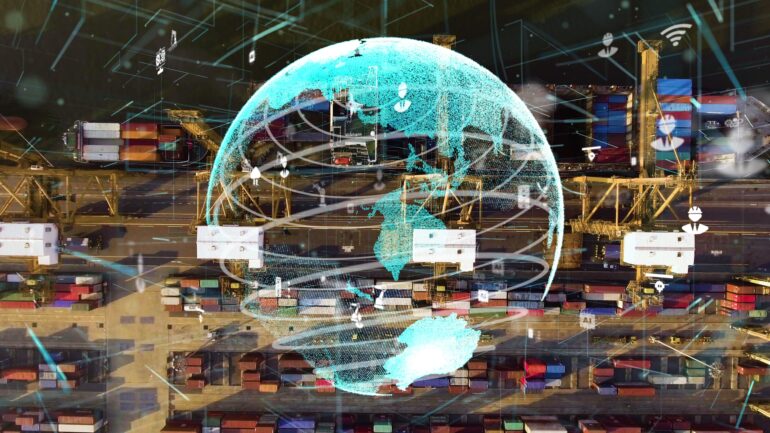Who Should Take on the Demand Risk in AI? A Look at the Supply Chain Dynamics

At the heart of the AI supply chain, there’s a constant struggle between different players – each wanting to maximise their profits while minimising their risks. It’s a challenge that the tech industry is grappling with, especially as AI continues to evolve.
A big question is emerging in the world of Artificial Intelligence: How can companies profit from AI while someone else takes on the risks associated with demand? This is a challenge that many in the tech industry are grappling with, especially as AI continues to evolve at a rapid pace.
The Tug of War: Risk vs. Profit
At the heart of the AI supply chain, there’s a constant struggle between different players – each wanting to maximise their profits while minimising their risks. This creates tension that often plays out in complex ways. Let’s break down how this works across various layers of the supply chain.
1. Foundry Layer: The Relationship Between TSMC and Nvidia
Take TSMC, a major manufacturer for Nvidia. TSMC faces a dilemma: if it builds too many factories (fabs), it risks being stuck with unused capacity if demand drops. But if it builds too few, Nvidia could face supply shortages. TSMC wants just enough capacity to meet Nvidia’s needs without overcommitting, while Nvidia wants TSMC to invest heavily to ensure they have all the chips they need. This imbalance gives TSMC significant leverage, meaning they’re likely to build less capacity than what Nvidia might want.
2. Semiconductor Layer: The Battle for Profits
Interestingly, companies like Nvidia and major Cloud providers (think Amazon, Google, and Microsoft) are often at odds despite being part of the same tech ecosystem. While they benefit from AI advancements, they also compete fiercely. Cloud companies are trying to reduce Nvidia’s dominance by developing their own chips, while Nvidia is working to supply new competitors with chips, thus competing with its customers. This tug of war really centres around profit margins.
3. Industrial Supply Layer: The Quest for Manufacturing Capacity
In the industrial supply chain, big tech firms are scrambling to secure manufacturing capacity for essential components like generators and cooling systems. Suppliers are hesitant to ramp up production due to fears of being left with excess capacity if demand falls. To overcome this, Cloud companies are making long-term commitments to buy supplies, encouraging manufacturers to invest in new capacity.
4. Cloud Layer: The Central Hub
The Cloud layer is crucial in this supply chain. It connects all the players and facilitates data storage and computing power. We’ll dive deeper into this in the next part of our discussion.
5. Model Layer: Computing Power Conflicts
For companies like OpenAI and Anthropic, the race is on to secure as much computing power as possible to develop advanced AI models. However, Cloud providers like Azure and AWS prefer to allocate resources to paying enterprise customers. This leads to negotiations filled with tension, especially as model sizes and complexities grow.
6. Customer Layer: The End User’s Advantage
At the end of this chain are the customers – businesses and startups that use AI applications. For them, the demand risk translates into a wealth of choices. They can easily switch between different AI services, benefiting from competition and efficiency in the supply chain.
The Fragile Equilibrium: Big Tech as Risk Absorbers
Right now, major Cloud companies are stepping up to absorb much of the demand risk. They do this by placing large orders that ensure profits for suppliers like Nvidia and TSMC, while also funding AI research labs. Here are a few examples of how this risk absorption works:
- GPU Orders: Nvidia wants to sell as many GPUs as possible now, while Cloud providers prefer to buy only what they need at the moment. However, they’re currently stockpiling GPUs to avoid falling behind their competitors, leading to higher costs.
- Data Centre Construction: Companies that build data centres typically wait until they have long-term leases signed before starting construction, transferring the demand risk to Cloud providers.
- Off-Balance Sheet Financing:Many GPU financing deals are backed by guarantees from big tech firms, making them feel more secure to investors.
- Funding Research Labs:Big tech companies are the main source of funding for AI research labs, making it increasingly difficult for these labs to operate without support.
The supply chain players are well aware of the challenges posed by AI’s rapid growth. They’re navigating a complex landscape where they aim to maximise profits while offloading demand risks to bigger tech firms. Currently, this creates a temporary balance, but it’s a delicate one. If the major tech companies pull back, the entire supply chain could face significant challenges. As they continue to invest heavily, they risk overextending themselves if AI doesn’t progress as expected.
In the end, the future of AI will depend heavily on how these dynamics play out.
Acknowledgement: www.sequoiacap.com





